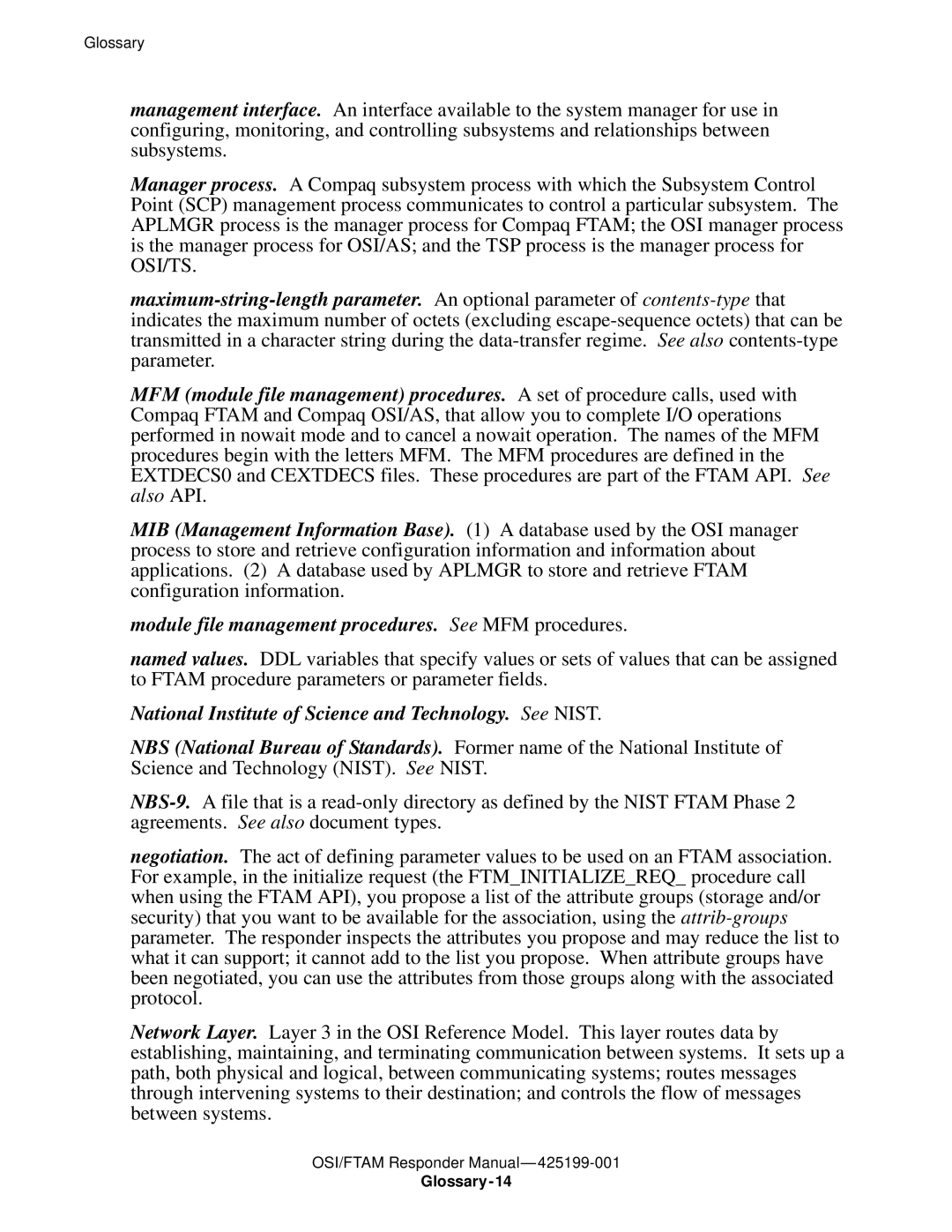Glossary
management interface. An interface available to the system manager for use in configuring, monitoring, and controlling subsystems and relationships between subsystems.
Manager process. A Compaq subsystem process with which the Subsystem Control Point (SCP) management process communicates to control a particular subsystem. The APLMGR process is the manager process for Compaq FTAM; the OSI manager process is the manager process for OSI/AS; and the TSP process is the manager process for OSI/TS.
MFM (module file management) procedures. A set of procedure calls, used with Compaq FTAM and Compaq OSI/AS, that allow you to complete I/O operations performed in nowait mode and to cancel a nowait operation. The names of the MFM procedures begin with the letters MFM. The MFM procedures are defined in the EXTDECS0 and CEXTDECS files. These procedures are part of the FTAM API. See also API.
MIB (Management Information Base). (1) A database used by the OSI manager process to store and retrieve configuration information and information about applications. (2) A database used by APLMGR to store and retrieve FTAM configuration information.
module file management procedures. See MFM procedures.
named values. DDL variables that specify values or sets of values that can be assigned to FTAM procedure parameters or parameter fields.
National Institute of Science and Technology. See NIST.
NBS (National Bureau of Standards). Former name of the National Institute of Science and Technology (NIST). See NIST.
negotiation. The act of defining parameter values to be used on an FTAM association. For example, in the initialize request (the FTM_INITIALIZE_REQ_ procedure call when using the FTAM API), you propose a list of the attribute groups (storage and/or security) that you want to be available for the association, using the
Network Layer. Layer 3 in the OSI Reference Model. This layer routes data by establishing, maintaining, and terminating communication between systems. It sets up a path, both physical and logical, between communicating systems; routes messages through intervening systems to their destination; and controls the flow of messages between systems.
